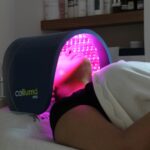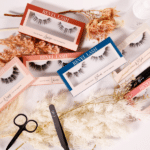By: Kimmy Plum
When it comes to maintaining clear skin, there is no magic potion, but a series of well-established habits can make a world of difference. In a society obsessed with skincare products and treatments, it’s easy to overlook the fundamental role that everyday habits play in achieving that coveted clear complexion. Here, we delve into the science behind these healthy habits and how they contribute to skin health.
Nourish from Within: The Role of Diet in Skin Health
Clear skin often begins with what’s on your plate. A diet rich in vitamins, minerals, and antioxidants can work wonders for your complexion. Nutrients such as vitamins A, C, and E, zinc, and omega-3 fatty acids are particularly beneficial for skin health. These nutrients help reduce inflammation, boost collagen production, and protect against oxidative damage.
While occasional indulgence in chocolate may not directly cause acne for everyone, maintaining a balanced diet and managing stress levels can significantly impact skin health. Foods high in sugar and dairy have been linked to breakouts and can exacerbate conditions like acne. On the other hand, incorporating plenty of fruits, vegetables, whole grains, and lean proteins can give your skin the essential building blocks to stay clear and healthy. Drinking plenty of water also helps keep your skin hydrated and flushes out toxins that contribute to blemishes.
Sleep and Stress: Unseen Factors Affecting Your Skin
Getting enough sleep and managing stress are two overlooked factors significantly impacting skin health. The body undergoes various regenerative processes during sleep, including the repair of skin cells. A lack of adequate sleep can lead to a dull complexion, dark circles, and even an increase in acne. Aim for seven to nine hours of quality sleep each night to support these vital processes.
Stress, meanwhile, triggers the release of cortisol, a hormone that can lead to increased oil production and inflammation in the skin, contributing to conditions such as acne and eczema. Engaging in stress-reducing activities like yoga, meditation, and regular exercise can help maintain a calm mind and clear skin. Additionally, mindfulness practices can improve overall well-being, which is often reflected in your complexion.
Skincare Routine: Simplicity Over Complexity
While it may be tempting to try every new skincare product on the market, simplicity is often more effective. A consistent and straightforward skincare routine tailored to your skin type can prevent irritation and breakouts. The cornerstone of any good regimen includes cleansing, moisturizing, and protecting the skin from sun damage.
Choose a gentle cleanser that removes impurities without stripping the skin of its natural oils. Follow up with a moisturizer suited to your skin type to maintain hydration and support the skin barrier. Finally, applying sunscreen daily is crucial. UV exposure can lead to premature aging, dark spots, and an increased risk of skin cancer. Opt for a broad-spectrum sunscreen with an SPF of at least 30, and remember to reapply throughout the day if you’re spending time outdoors.
In addition to these basics, consider incorporating products with active ingredients such as retinoids, vitamin C, and hyaluronic acid. These can help address specific concerns like wrinkles, hyperpigmentation, and dryness. However, it’s important to introduce new products gradually and monitor your skin’s reaction to avoid irritation.
In sum, achieving clear skin is about more than just topical treatments. It requires a holistic approach that includes a nutritious diet, sufficient sleep, stress management, and a thoughtful skincare routine. Integrating these healthy habits into your daily life allows you to enjoy a radiant complexion that reflects your overall well-being.
Published By: Aize Perez








